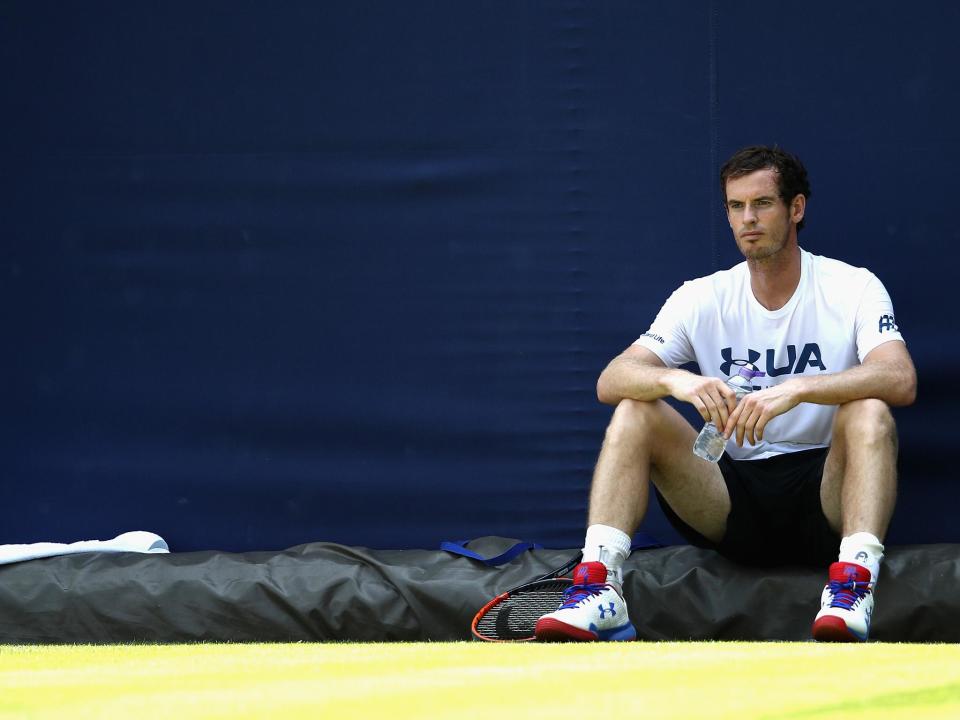Tennis: Andy Murray should follow Roger Federer's example on the road to recovery

Having put himself through physical pain for the last six months in his ultimately unsuccessful attempt to recover full fitness, Andy Murray has subjected himself this week to what must feel like emotional torture. As if missing next week’s Australian Open was not distressing enough, the former world No 1 is now recovering here in the very city that stages the year’s opening Grand Slam event following surgery on his right hip.
Murray, who might have to wait another 10 days before he can fly home, is unlikely to drop in on his friends and rivals at Melbourne Park, but whenever he turns on the television here he is likely to see some all-too-familiar faces and places. Today he could have watched Novak Djokovic trouncing Dominic Thiem down the road at Kooyong in his first match since Wimbledon, Tomas Berdych beating Rafael Nadal in the final of the Tie Break Tens exhibition event in Margaret Court Arena, or action from tournaments in Sydney, Hobart and Auckland.
READ MORE: Where Alexis Sanchez would fit in at City
READ MORE: Conte has no regrets over Jose row
At least Murray has not been the only player waging his fitness battles. Djokovic and Stan Wawrinka, who have been out of competition as long as the Scot, might yet join him on the absentees’ list next week: the Serb is still assessing his elbow problem while the Swiss cast doubt on his own prospects of returning after knee surgery when he pulled out of the Tie Break Tens tournament as a “precaution”. Nadal, meanwhile, has not played any competitive matches yet this year because of his knee problems, while Kei Nishikori has already chosen not to risk his wrist here.
In the women’s game Serena Williams has decided that returning to competition four months after giving birth is too early, Johanna Konta has been recovering from a hip problem and Garbine Muguruza withdrew from a tournament for the second week in a row when she pulled out of this week’s Sydney International with a thigh injury.
Planning a schedule that gives you the best chance of success in the most important tournaments has therefore never been a greater priority for many of the game’s leading players. It will no doubt occupy much of Murray’s thinking in the weeks and months ahead as he works towards his intended return in this summer’s grass-court season.
Murray has already decided that he will no longer put himself through the sort of schedule that saw him play 87 matches in 2016, the last of which saw him secure the year-end world No 1 ranking for the first time. Murray played 17 tournaments that year, as well as the Hopman Cup exhibition event and two Davis Cup ties.
“I’m certainly not going to be putting in the same amount of tournaments and effort to try to get to No 1 in the world,” Murray said as he looked ahead to his return. “I’ll certainly be more considered in the amount of tournaments I play, even though I play a conservative schedule anyway in comparison to most of the players on the tour. I’ll be focusing more on trying to win major events and big tournaments rather than trying to achieve certain ranking goals.”

